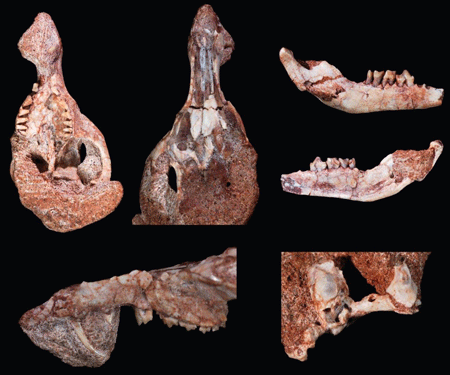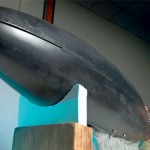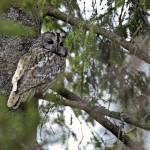
The fossils will provide new clues for the evolution of mammals. Image credit: University of Louisville
The new species would have looked like Scrat, the sabre-toothed squirrel from Ice Age.
Scientists from the University of Louisville, US, have discovered two skulls from the first known mammal from the early Late Cretaceous period of South America. The new species has been named Cronopio dentiacutus and belongs to an extinct group called dryolestoids, which are distantly related to today’s placentals and marsupials.
Cronopio would have measured 10 to 15 centimetres, with long canine teeth and a narrow muzzle, and has been described by palaeontologist Guillermo Rougier as looking somewhat like the character Scrat from Ice Age. It is believed to have been an insectivore and would have lived in a vegetated river plain more than 100 million years ago.
One of the things which makes this discovery so important is that mammalian skulls are small, fragile and rarely found. The skulls in question were discovered in 2006 in northern Patagonia, embedded in rock, and removing them took several years of laboratory work.
“We knew it was important, based on the age of the rocks and because we found skulls,” said Rougier, one of the authors of the study, published in Nature.
Most discoveries of this age have consisted of teeth or bone fragments, as enamel is the hardest substance in the body and can survive for long periods of time. But teeth aren’t able to provide a detailed picture of this group of early mammals.
Discovering the skulls has allowed the researchers to examine the animal’s biology, which made it possible to determine whether it was the first of its kind for this location and time period. “This time period in South America was somewhat of a blank slate to us,” Rougier said.
“Now we have a mammal as a starting point for further study of the lineage of all mammals, humans included.”
In recent years, research has revealed that the southern continents, which formed Gondwana, had their own endemic mammals during the Age of Dinosaurs. This discovery will help scientists better understand the genealogy of the South American mammals and where it fits into the evolution of mammals.
“This tells us a little more of the full history of our lineage, a very resilient lineage,” Rougier said. ” Cronopio lived in a completely different world than ours, dominated by dinosaurs and with a different geography; these new fossils give us information on how transient and ever-evolving our world is.”
Source: Eureka Alert






